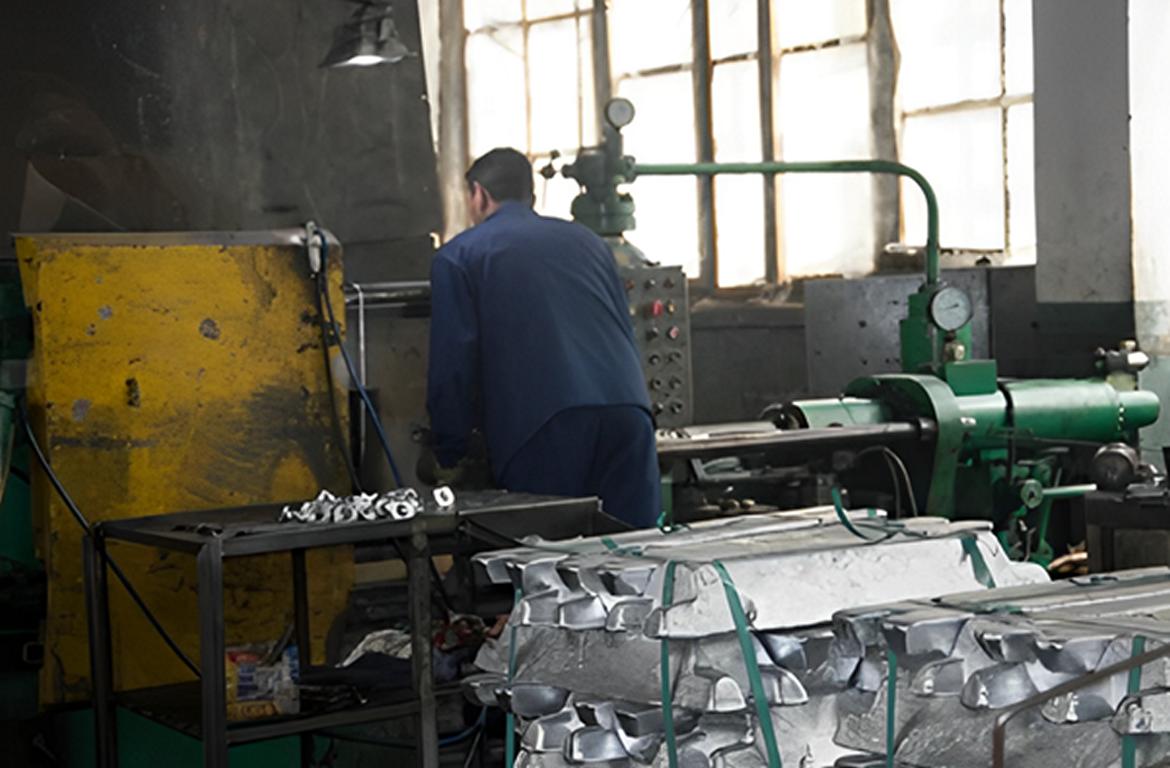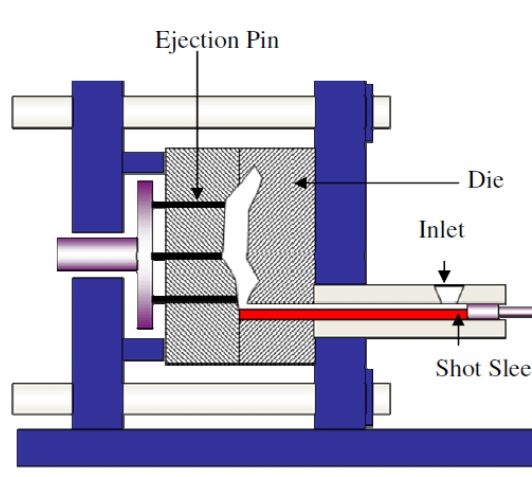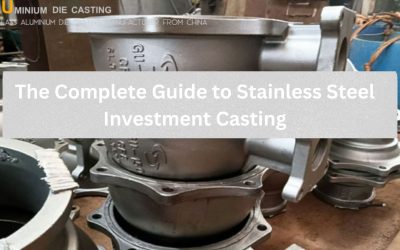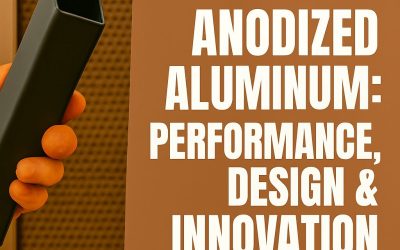What is HPDC? Its Applications and Advantages
HPDC, or high-pressure die casting, is a process for manufacturing low-melting-point metals. This technique generates large volumes of complex metal parts. It makes highly accurate metal parts. The global market value of HPDC will be around US$14650 million in 2024. According to a research study, it will rise to USD 20770 million by 2030. So, we will shed light on the complete process and advantages of HPDC in this blog post.
History of HPDC Casting
The origin of HPDC casting dates back to the mid-1800s. It was first used in the printing industry. Led and tin were poured into a mold. So, HPDC casting first produced the printing machinery keys. But the process was slow at that time. Moreover, it was not suitable for mass production of metals. Advancements have made the process highly efficient over time. It is a reliable process today due to continuous improvements.
How would you Define HPDC casting?
HPDC casting is an efficient method to make high-quality metal parts. In this technique, molten metal under high pressure is injected into a mold or a die cavity. The hot metal cools and solidifies rapidly in the die cavity. After that, it takes the shape of the mold. We can then separate our desired metal from the mold. Molten metals are mostly magnesium and aluminum alloys. The mold is usually made up of steel or cast iron. HPDC casting is most common in the manufacturing of automotive and electronic products. But it also manufactures highly accurate, everyday-use products.
Step-by-Step Process of HPDC Casting
Now you know about HPDC casting and its global market size. You might be curious to know the complete process. So, let’s discuss its complete process. The method of HPDC casting can differ according to the product requirements. So, here are the steps of the general HPDC casting process.
1. Preparation of Mold
First, prepare the mold. The mold is designed based on the shape of your desired product. The mold is composed mostly of steel. So, it can withstand high temperatures and pressure.
- The setting of Mold:
Now, mount the molt on the die-casting machine. The die-casting machine has two halves. One is a secondary die-half. The other is a moveable die half. The die-casting machine closes the two halves of the mold.
- Maintenance of Mold:
Maintenance of mold is also important. Clean the mold to remove impurities. Preheat the die-cast mold to aid the flow of molten metal. Moreover, lubricate the inner side of the mold to regulate temperature. This facilitates the removal of the desired product.
2. Injecting the molten metal
Add the molten metal into the shot chamber. After that, inject it into the mold. The injection process occurs rapidly. It requires a very high pressure of 1500 to 25000 PSI. There are two different ways to inject the metal into the molt. These are hot chamber injection and cold chamber injection.
- Hot Chamber Injection:
Hot chamber injection is best for metals with low melting points.so it is suitable for zinc, magnesium, and lead alloys. In this method, we fill the metal in a gooseneck-shaped tube. The tube then ejects the metal into the die cavity via its nozzle.
- Cold Chamber Injection:
Cold chamber injection is ideal for metals with high melting points. Solid metals such as aluminum, copper, and brass use this mechanism. In this method, we pour the metal into the cold chamber sleeve. We can do it either manually or automatically. Now, a hydraulic plunger forces the metal from the short sleeve into the molt.
3. Cooling and Solidification
- Cooling:
The melted metal cools rapidly. So, it takes the shape of the mold cavity. Quick cooling occurs due to the high thermal conductivity of mold material.
- Solidification: The metal solidifies after cooling. Metal may shrink after becoming hard. But high pressure maintains its dimension. Additionally, it also ensures that the metal is free from internal voids.
4. Removal of the Metal
After cooling and solidification, the die halves are opened. Ejection pins push the metal out of the mold. Now the desired metal is ready.
5. Trimming
The casting may have excess material. So, we use saws and cutting tools to trim the metal. Trimming helps to achieve the best surface finish.
| Material Group | Alloy Designation | Key Properties | Common Applications |
| Aluminum Alloys | A380 | Good fluidity, corrosion resistance, and moderate strength | Automotive engine blocks, transmission housings, and electronics enclosures |
| A360 | Better corrosion resistance improved ductility | Aerospace components, electrical enclosures | |
| A413 | Excellent fluidity and good pressure tightness | Complex thin-walled parts, pumps, and fittings | |
| A383 | Good mechanical properties and high strength | Automotive parts, general industrial components | |
| A390 | High wear resistance, high strength | High-performance automotive parts, heavy-duty machinery | |
| Magnesium Alloys | AZ91D | Good strength-to-weight ratio, excellent castability | Automotive components, consumer electronics housings |
| AM60B | Good flexibility and impact resistance | Automotive safety components, structural parts | |
| AS41B | High-temperature performance and good creep resistance | Automotive powertrain components | |
| Zinc Alloys | Zamak 3 | Excellent castability and good mechanical properties | Small, intricate components, hardware fittings |
| Zamak 5 | Higher strength, slightly lower ductility | Components requiring higher strength, locks, and gears | |
| ZA-8 | Good bearing properties, higher strength | Bearing housings, industrial machinery components | |
| ZA-27 | Highest strength and hardness among zinc alloys | Heavy-duty industrial components, high-wear applications | |
| Copper Alloys | Brass (e.g., C85700) | High corrosion resistance and good machinability | Plumbing fittings, decorative hardware |
| Lead Alloys | Lead-Tin Alloys | High density and good corrosion resistance | Radiation shielding, ballast, and weights |
Advantages of high pressure Die Casting:
Now, we know the complete process of HPDC casting. So let’s talk about its advantages. Some of its advantages are:
1. Mass production
HPDC can produce large volumes of the required metal. High pressure enables the injection of molten metals at a rapid speed. So, it produces large quantities of the metal. Hence, HPDC is well known for the mass production of materials.
2. High Strength
HPDC die casting manufactures uniform metal structures. So, it enhances mechanical properties. Hence, the metal produced is of high quality.
3. Thin-walled Components
Unlike other castings, HPDC casting can cast thin-walled components. Its high pressure creates lightweight parts. So, it helps reduce the weight of metals. Additionally, it allows the insertion of co-cast parts such as screws.
4. High Quality
HPDC provides smooth surface finishes for the desired metals. It ensures that the molten metal fills all parts of the molt. So, it creates smooth surfaces. These surfaces are best for applying additional coatings. Hence, it eliminates the need for secondary machining.
5. Flexibility
The die shapes are flexible in HPDC casting. So, it allows the construction of complex parts. These complex parts are used in complex machinery.
Difference Between High-Pressure Die Casting vs. . Low-Pressure Die Casting
So, here is a common table that will help you learn about the major differences between high-pressure die-casting and low-pressure die-casting:
| Feature | High-Pressure Die Casting | Low-Pressure Die Casting |
| Process Description | Molten metal is injected into the die at high speed and pressure. | Molten metal is drawn into the die by a low-pressure differential. |
| Pressure Range | Typically, 10–175 MPa (1500–25,000 psi) | Typically, 0.1–0.7 MPa (15–100 psi) |
| Cycle Time | Shorter, usually a few seconds per part | Longer, it can take several minutes per part. |
| Production Volume | Suitable for high-volume production | Suitable for lower- to medium-volume production |
| Part Complexity | Ideal for complex shapes with thin walls | Ideal for simpler shapes with thicker walls |
| Material Utilization | High material waste due to sprues and runners | More efficient with less waste |
| Part Quality | High dimensional accuracy and a good surface finish | Good dimensional accuracy and surface finish |
| Mechanical Properties | It can be lower due to trapped air and porosity. | Generally better due to fewer defects |
| Tooling Cost | Higher initial cost due to robust die requirements | Lower initial cost, less robust die needed |
| Maintenance | Higher due to more wear and tear on dies | Lower due to less stress on dies |
| Common Alloys | Aluminum, zinc, and magnesium | Aluminum, magnesium |
| Cooling System | Often requires complex cooling systems. | Simpler cooling systems |
| Automation | Highly automated | Less automated, more manual processes involved |
Limitations of HPDC Casting
- High initial costs: Thus, heavy capital investments in machines and molds are required.
- Complex equipment needs to function with great accuracy, and its maintenance also involves skilled work.
- Limited material compatibility: Sulfide vaccination is most effective for metals that melt at low temperatures, such as aluminum and zinc.
- Size and weight restrictions: the application is mainly practiced in small portions.
- Porosity issues are apt to contain some internal voids and thus require a precise amount of pressure to be applied to them.
- Additional finishing: It could still need additional operations or touching up to be ready for usage or to have the necessary level of smoothness, for instance.
Applications of HPDC casting:
HPDC casting has wide-scope applications. Some of them are:
- Health Industry:
It produces lighter surgical tools in the health sector. HPDC casting has constructed medical devices, ultrasound machines, and implantable devices. So, it has an essential role, even in the medical industry.
- Aerospace Industry: HPDC die casting creates complicated engine parts in the aerospace industry. It also helps in building aircraft components. Sometimes it establishes small structural parts of the aircraft.
- Automobile Sector:
HPDC casting generates different parts for the automobile industry. Some of the main components it can produce are:
- Engine Blocks
- Cylinder Heads
- Transmission parts
- Brake Components
- Suspension parts
- Consumer Goods: HPDC casting can manufacture everyday items. These can be household appliances, such as refrigerator components. It can also create consumer hardware and different household components.
- Sport Industry:
It has wide applications in the sports industry. HPDC can make different bicycle components. It can also design golf clubs and tennis rackets. HPDC has contributed to almost every industry.
What are the alternatives to HPDC casting?
Multiple methods are now available on the market that can be used in place of HPDC casting. Let’s discuss them here.
1. Sand Casting
Sand casting is among the oldest and most widely used casting procedures intended for various applications. In this process, a mold of sand is made, and the molten metal is cast into the mold through a crucible. The major advantage of sand casting is that it is cheap for the production volume, particularly in small volumes, and is used to produce large parts or those with complex structures. It is especially suitable for different types of metals and can produce engine blocks, large metal products, and even prototypes for engines.
2. Investment Casting
Investment casting, also commonly referred to as lost-wax casting, involves the use of a wax copy of the actual part to create a mold where a ceramic material is used to cover the wax model. Water is then washed away, and instead of wax, molten metal is poured into the ceramic mold.
Gravity Die Casting
It is also called permanent mold casting; it is a circumferential mold made from metal where molten metal is poured under force, which is gravity. This process results in the production of parts with superior mechanical properties to sand casting while producing good accuracy in the final products. Gravity die casting is most suitable for applications where a fairly large number of items or large-sized items are made and finds use more commonly in manufacturing auto parts, engine parts, and heavy produce due to the advantages of economy and standard construction.
Why choose GC Precision Mold Co. for HPDC?
Now you know almost every bit of HPDC casting. So let us tell you why GC Precision Mold Co. is one of the best high pressure die casting company. Here are the reasons:
- China die manufacturers with 20 years of practical experience.
- Excellent services at an affordable price
- Provide custom die-casting parts for cars, bikes, and musical instruments.
- Provide high-quality custom products.
- 100% Customer Satisfaction Guaranteed
- Pressure die-casting machinery ranging from 120 tons to 1650 tons
Conclusion:
The global market size of HPDC casting is rising day by day. High-pressure die Casting involves melting metal under high pressure. The molten metal is then converted into the desired shape. This technique can mold even complex-shaped metals. The process consists of four steps. These steps are: preparing the molt, injecting the molten metal, cooling and solidifying, and then removing the metal. This technique shapes metals in the automobile, health, and sports industries.
Frequently Asked Questions
Q1. What are the cons of HPDC casting?
HPDC die casting has various cons. Its equipment costs are very high. Small manufacturers cannot afford it. Managing the temperature, pressure, and conditions during the process is challenging. So, it requires careful monitoring or post-casting care. Hence, solutions to these problems can be costly and time-consuming.
Q2. What does HPDC stand for?
HPDC stands for high-pressure die castings. It uses high pressure to produce highly smooth metals. Metals of complex shapes can be created due to their elevated pressure. So, these metal parts are then used in complex appliances and sports.
Q3. What types of metals are commonly used in HPDC casting?
HPDC casting typically involves low-melting-point metals as the metal of choice, namely aluminum, magnesium, and zinc alloys. These metals are chosen for use because they can be easily injected into molds and rapidly cooled to produce high-quality parts that meet the mechanical requirements of the specific application.
Q4. How does HPDC compare to other casting methods?
HPDC is capable of faster rates of production, improved accuracy of dimensions, and smooth surfaces for the products. HPDC has the advantages of thin-walled and complex part production, which has better consistency as compared to sand casting and no or very little need for any post-casting treatments. However, it is more expensive due to the expenses incurred in acquiring the machinery used in molding the metal and the molds themselves.









0 Comments